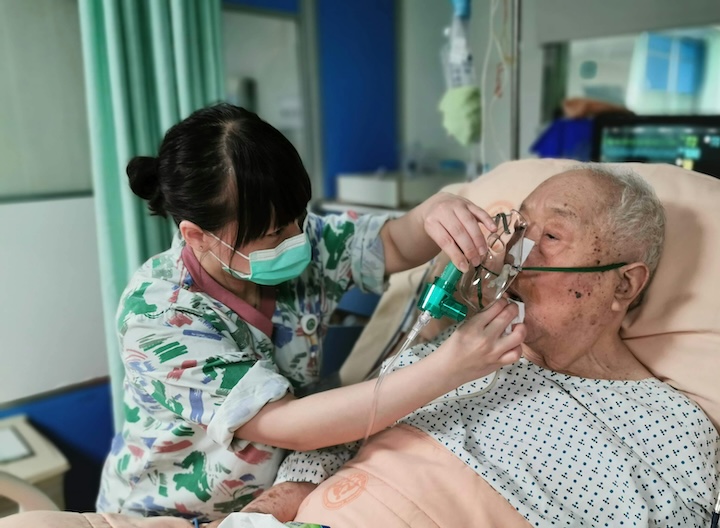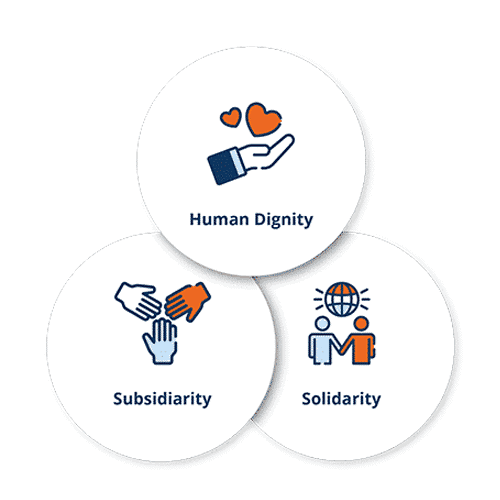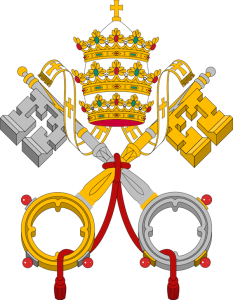The Tragedy of Euthanasia and Physician Assisted Suicide
by CAPP-USA

Euthanasia is never an appropriate path, even if a person is in a vegetative state.
What is Euthanasia & Physician Assisted Suicide?
Both euthanasia and physician-assisted suicide involve actions or omissions that lead to a person’s death, with the primary intention of relieving suffering. (Declaration on Euthanasia, II)
However, the two terms differ based on the role of medical professionals:
- Euthanasia: Involves a medical professional actively carrying out the act that causes death.
- Physician-Assisted Suicide: Involves a medical professional providing the means but leaving the final act to the patient.
We will use the term “euthanasia” to encompass both euthanasia and physician-assisted suicide.
Euthanasia Pros and Cons
There are no “pros” to euthanasia.
“Euthanasia or mercy killing … is a grave moral evil”. (Pope St. John Paul II, 6)
“Such an act is always ‘a serious violation of the law of God'”. (Pope St. John Paul II, 4)
And “never forget that the temptation of euthanasia appears as one of the more alarming symptoms of the ‘culture of death'”. (Pope Benedict XVI)
BUT, WHAT ABOUT THE “PRO” ARGUMENTS?
Advocates of euthanasia use terms like “freedom”, “compassion”, “choice”, “death with dignity”, and “the right to die” to mask the act with “a veil of human compassion”. (Pope Benedict XVI)
However, “Even if it is motivated by sentiments of a misconstrued compassion or of a misunderstood preservation of dignity, euthanasia actually eliminates the person instead of relieving the individual of suffering.” (Pope St. John Paul II, 3)
Arguments that euthanasia should be legally allowed fail to understand “[f]undamental rights are neither created by the lawmaker nor granted to the citizen. The value of human dignity…takes precedence over all political decision-making”. (Pope Benedict XVI)
What these “pro” arguments do is advance a “the throwaway culture” (Pope Francis) and “[the] spread of this mentality turns…into a culture of death.” (Pope Francis)
What Proponents Get Wrong
“Man’s life is a gift of God that we are all called to guard always.” (Pope Benedict XVI)
Of course, the Church knows and understands that “death, often preceded or accompanied by severe and prolonged suffering, is something which naturally causes people anguish.” (Declaration on Euthanasia, III)
But she advises us “not to fall into the deceptive trap of thinking that life can be disposed of, to the point of ‘legitimizing its interruption with euthanasia, even if it is masked by a veil of human compassion”. (Pope Benedict XVI)
“Suffering, old age, a comatose state or the imminence of death in no way diminish the intrinsic dignity of the person created in God’s image.” (Pope St. John Paul II, 3)
The Meaning of Suffering
Without a Christian perspective, the world often seeks to avoid suffering at all costs and strives to make death as painless as possible.
However, as Pope Benedict XVI stated, “Jesus, dying on the Cross, gave human suffering a transcendent value and meaning.” (Address to the Pontifical Council for Health Pastoral Care)
“[S]uffering, especially suffering during the last moments of life, has a special place in God’s saving plan; it is in fact a sharing in Christ’s passion and a union with the redeeming sacrifice which He offered in obedience to the Father’s will.” (Declaration on Euthanasia, III)
Of course, the Church does not “impose a heroic way of acting as a general rule. On the contrary, human and Christian prudence suggest for the majority of sick people the use of medicines capable of alleviating or suppressing pain”. (Declaration on Euthanasia, III)
So, What Does True Compassion Look Like?
“We cannot avoid death, and precisely for this reason, after having done everything that is humanly possible to cure the sick, it is immoral to engage in overzealous treatment.” (Pope Francis)
“True compassion…helps draw the line when it is clear that no further treatment will serve this purpose.” (Pope St. John Paul II, 4)
It is then that “[w]e must accompany people towards death, but not provoke death or facilitate any form of suicide.” (Pope Francis)
“The pleas of gravely ill people who sometimes ask for death are not to be understood as implying a true desire for euthanasia; in fact, it is almost always a case of an anguished plea for help and love.” (Declaration on Euthanasia, II)
“For a Christian, a good death is an experience of the mercy of God”. (Pope Francis)
We must accompany people towards death, but not provoke death or facilitate any form of suicide. (Pope Francis)
What Must Medical Professionals Do?
“Medicine is always at the service of life”. (Pope St. John Paul II, 2)
“Catholic hospitals cannot allow themselves to go this way [euthanasia]. This is a path which we cannot take”. (Pope Francis)
Health-care workers have the “specific mission…to be ‘ministers of life’ in all its phases, particularly in those marked by fragility connected with infirmity.” (Pope Benedict XVI)
“Methods of ‘palliative care’…must ‘seek to make suffering more bearable in the final stages of illness and to ensure that the patient is supported and accompanied in his or her ordeal'”. (Pope St. John Paul II, 5)
Palliative care must ensure “every person who is preparing to live the last stretch of their life can do so in the most humane way possible.” (Pope Francis)
“Medical doctors and health-care personnel, society and the Church have moral duties toward these persons from which they cannot exempt themselves without lessening the demands both of professional ethics and human and Christian solidarity.” (Pope St. John Paul II, 4)
What Must We Do?
We must help society to a correct view of death.
“Today’s efficiency mentality often tends to marginalize our suffering brothers and sisters, as if they were only a ‘weight’ and ‘a problem’ for society.” (Pope Benedict XVI)
“They aren’t needed, and what isn’t needed gets thrown away. What doesn’t produce is discarded.” (Pope Francis)
It is true that “[m]ore and more lonely elderly people exist…in situations of serious illness and close to death. In such situations, the pressure of euthanasia is felt, especially when a utilitarian vision of the person creeps in.” (Pope Benedict XVI)
But “is it right to eliminate, to end a human life to solve a problem?” (Pope Francis)
“[C]ivil society and the community of believers must aim not only to ensure that all live a dignified and responsible life, but also, experience the moment of trial and death in terms of brotherhood and solidarity”. (Pope Benedict XVI)
Bottom Line: Euthanasia is Never Acceptable
Euthanasia always has death as its intention.
Euthanasia is at odds with the center and source of our dignity – being made in God’s image and likeness.
“The dignity of the human person is rooted in his creation in the image and likeness of God”. (Catechism of the Catholic Church, 1700) And this “divine image is present in every man.” (Catechism of the Catholic Church, 1702)
“Even [those] who find themselves in the clinical condition of a ‘vegetative state’ retain their human dignity in all its fullness. (Pope St. John Paul II, 3)
___________________________________________





